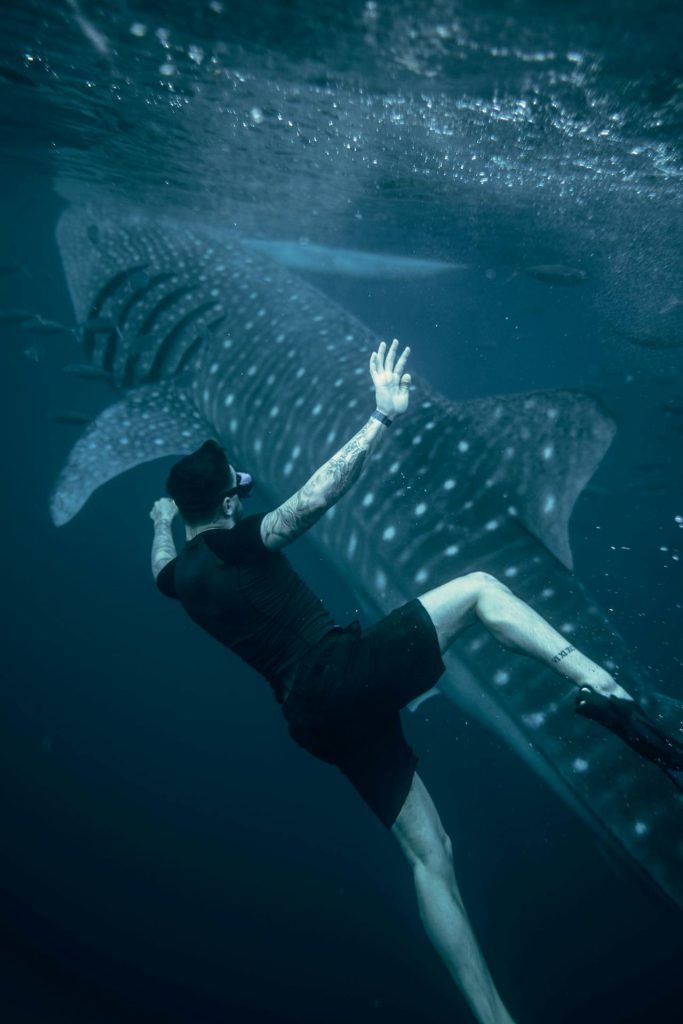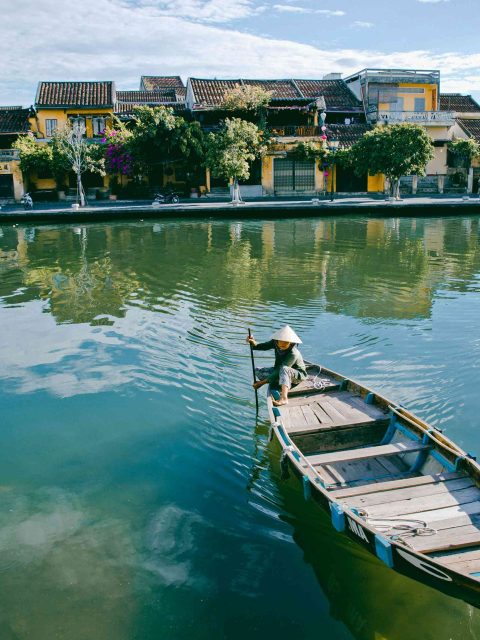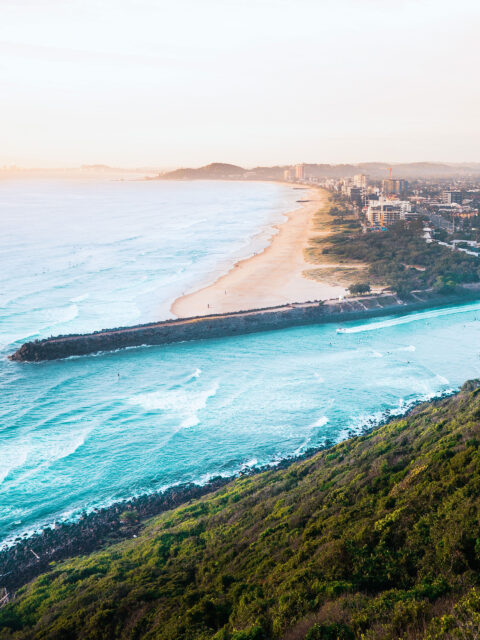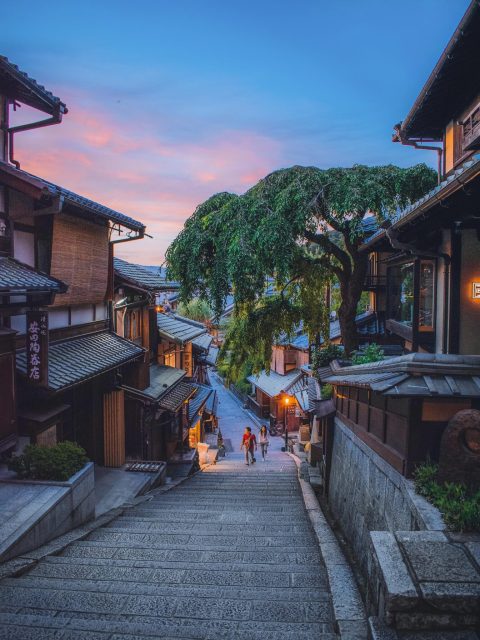Complete Philippines Travel Itinerary 3 Weeks
The Philippines, a captivating archipelago of over 7,600 islands, offers travelers a journey through pristine beaches, lush jungles, magnificent volcanoes, and vibrant cities. A Philippines travel itinerary 3 weeks reveals the incredible diversity this country has to offer, from idyllic beaches and emerald-green rice terraces to centuries-old churches and lively festivals. Prepare to be welcomed by the warm hospitality of the Filipino people, known for their friendliness and openness.
Chapters
- Philippines Travel Itinerary 3 Weeks
- Philippines Travel Tips
- Is the Philippines a safe country?
- Is the Philippines Safe for Travelers?
- Your Budget for the Philippines
- Transportation Tips in the Philippines
- Best Time to Visit the Philippines
Philippines Travel Itinerary 3 Weeks
Traveling in the Philippines requires some planning, as the islands are separated by the ocean, making travel between them time-consuming. While it’s impossible to see everything in just three weeks, a well-planned Philippines travel itinerary 3 weeks can still take you to many of the country’s highlights. This Philippines travel guide includes ample time to explore, allowing you to enjoy some of the most stunning landscapes and cultural experiences without feeling rushed.
Day 1 – 3: Bantayan Island, Cebu
Bantayan Island Cebu was the first stop on our 3-week Philippines travel itinerary. After landing in Cebu, we headed to the North Bus Terminal to catch a bus to Hagnaya Port for about 200 PHP. The buses don’t run on a fixed schedule, so you’ll need a bit of patience as they usually depart once full. The driver initially estimated a 3-hour journey, but it took closer to 4 hours, including a few stops for snacks and restroom breaks. This made the trip more comfortable, even if it took a bit longer.
At Hagnaya Port, we purchased ferry tickets for 185 PHP, plus a 10 PHP terminal fee. Ferries depart every two hours, with a one-hour ride to Bantayan Island. The ferry offers basic amenities, including snacks and a restroom, making the trip more comfortable. Upon arrival, you can take a tricycle to Santa Fe, the main town, or enjoy a 15-minute walk into the center.
Beaches on Bantayan Island
The beaches on Bantayan are known for their white sandy shores and clear waters, though not all of them are perfect. Paradise Beach was our favorite, offering a quiet escape with an entrance fee of 50 PHP. The beach was almost empty, making it a serene spot to relax. Other popular options include Kota Beach and Sugar Beach, known for their picturesque settings and clear waters, ideal for anyone seeking peace and quiet.
Food and Drink on Bantayan Island
Santa Fe offers plenty of affordable dining options. A delicious grilled chicken meal with rice and vegetables only cost around 159 PHP, while beer was priced at 55 PHP per bottle, perfect for enjoying local flavors on a budget. If you’re in the mood for variety, MJ Square has several dining options, ranging from Filipino cuisine to a few international dishes, making it a great spot to unwind after a day of exploring.
Where to stay in Bantayan Island
Accommodation prices in Bantayan vary widely. A basic air-conditioned room costs around 1,000 PHP, while beachfront stays like Kota Beach Resort or Santa Fe Beach Club may be slightly pricier. For budget-friendly accommodation on Bantayan Island, head to the Santa Fe area, where you’ll find many options and can sometimes negotiate directly. While lodging prices may be a bit higher compared to other parts of Southeast Asia, the stunning beaches make it worth the cost.
If you’re looking to relax and enjoy the laid-back lifestyle and friendly locals, Bantayan is the perfect destination for a true island getaway. You can rent a motorbike for around 300 PHP to explore hidden gems in Bantayan, like Octo Cave and secluded beaches, offering a peaceful and private experience that’s hard to find elsewhere.
Day 3 – 5: Moalboal
Leaving Bantayan Island, we took a four-hour bus ride back to the north bus station in Cebu City, then a taxi to the south bus terminal, and finally another bus to Moalboal. It’s quite the journey, but absolutely worth it! If you’re building a Philippines itinerary, this is one spot you shouldn’t miss. Moalboal is a fantastic place to meet other travelers and soak up some of the Philippines’ best underwater experiences.
Beaches in Moalboal
Moalboal is most famous not for its sandy shores, but for its incredible marine life. The Moalboal beaches are renowned for the sardine run and abundant sea turtles, particularly at Panagsama Beach. For snorkeling, head out between 8 am-10 am or 3 pm-5 pm for the best chance to see turtles. For those who want to enjoy a peaceful spot, White Beach is about 5 km from Moalboal town, featuring clear waters and soft sand perfect for relaxation. This quieter beach also has a small entrance fee, but it’s usually not crowded.
Where to stay in Moalboal
During our stay, we chose a guesthouse called Roo’s, where we paid around £17.50 per night with breakfast included. It was only a five-minute walk to the beach, and the rooms were clean with friendly staff. If you’re looking for an affordable beachfront accommodation in Moalboal, check out places near Panagsama Beach for convenience and community vibes. For a more secluded stay, T Breeze Coastal Resort is budget-friendly and quiet, right next to Asian Belgian Resort with fantastic diving spots and a beautiful coral reef.
Food and Drink in Moalboal
Despite its small size, Moalboal offers a variety of dining options. Meal prices range from 150-300 PHP, making it easy to enjoy local Filipino dishes or a sunset view at beachfront restaurants. Ven’z Kitchen is a local favorite for affordable and authentic Filipino food. The Pleasure Principle Resto-Bar also offers international options and a cozy vibe for unwinding after a day of exploring.
Things to Do in Moalboal
We spent three nights in Moalboal, which was perfect for exploring its highlights. Moalboal is one of the best places to experience scuba diving in the Philippines. The sardine run is famous worldwide, and we had a fantastic time diving alongside thousands of sardines swirling in massive vortexes. If you’re up for adventure, I recommend canyoning at Kawasan Falls nearby, which cost us around 1,000 PHP and included a traditional Filipino lunch. Moalboal offers an adrenaline-packed experience with activities like diving, snorkeling, and exploring the coastline.
Day 5 – 7: Oslob, Cebu
Leaving Moalboal, the journey to Oslob takes around three hours and involves a tricycle ride to the Moalboal bus station (150 PHP), followed by a bus to Baiden (70 PHP), and a final bus to Oslob (30 PHP). The trip is straightforward, and bus conductors are always willing to help with directions.
Beaches in Oslob
While Oslob beaches are not the main attraction, visitors can explore the nearby Sumilon Island with its pristine white sand beaches and crystal-clear waters, perfect for snorkeling and relaxation. Sumilon Island is about a 15-minute boat ride from Oslob and offers some of the best snorkeling spots in Oslob. Here, you’ll find the perfect place for beachside relaxation.
Where to stay in Oslob
For accommodation in Oslob, we chose Sasha’s Resort at 700 PHP per night. This affordable beachfront lodging features a restaurant and pool, and it sits right beside the sea, providing a scenic view ideal for a relaxing breakfast. For more budget-friendly options, Sharky’s Hostel offers basic accommodations at a lower price, suitable for backpackers and budget travelers. On the other hand, if you’re looking for a more luxurious experience, Bluewater Sumilon Island Resort provides high-end amenities, private beach access, and activities like snorkeling, though with a significantly higher price starting from 5,000 PHP per night.
Food and Drink in Oslob
Although many accommodations in Oslob have on-site restaurants, heading into town offers a variety of food and drink in Oslob. The town center has affordable cafes and BBQ street food, and a local 7-Eleven makes it easy to stock up on essentials. For a taste of Oslob cuisine, popular spots like Chez Tonton and Paul and Madz serve up delicious local dishes.
Things to Do in Oslob
Oslob is famous for its whale shark watching experiences, drawing visitors eager to swim alongside these majestic creatures. For just 1000 PHP, this unforgettable underwater experience was one of the highlights of our trip. Renting an underwater camera for 550 PHP is recommended to capture these amazing moments. Local organizations ensure that whale shark interactions are responsibly managed to minimize impact on the animals’ natural behavior.
Another popular activity is a visit to Tumalog Falls, located 8 km from the town center. A round-trip tricycle ride costs around 300 PHP, and the entrance fee is 20 PHP. The falls are an excellent place to relax and enjoy the stunning natural scenery. For those seeking a more adventurous day, a Sumilon Island day trip provides access to vibrant marine life, coral reefs, and scenic beaches that make for an exciting day trip from Oslob.
Day 7 – 11: Bohol
From Oslob, there’s a convenient direct boat service to Panglao Island for 1000 PHP, taking about 1.5 hours. Since it’s a newer service, there may be minor scheduling issues. For instance, our boat was set to depart at 10:30 AM but didn’t leave until noon. Though we planned to arrive at Alona Beach, we instead ended up at Mojo Beach.
Beaches in Bohol
Alona Beach is one of the most popular Bohol beaches; however, it can get quite crowded, and the water isn’t always as clear as one might hope. If you’re looking for a quieter spot, Dumaluan Beach is an excellent alternative, known for its crystal-clear waters and peaceful ambiance, ideal for couples and families seeking a tropical getaway. For a more secluded experience, Anda Beach on the eastern side of Bohol offers a beautiful, less crowded spot for swimming and snorkeling.
Food and Drink in Bohol
Most of the popular food and drink in Bohol can be found around Alona Beach, with a wide variety of options for local flavors and international cuisine. We also checked out the Island Mall for more affordable choices and were especially impressed with Hola – a spot serving delicious Mexican burritos for just 180 PHP. Bohol Bee Farm is another standout, known for its flavorful dishes made with fresh, organic ingredients, offering a unique and memorable culinary experience.
Accommodation in Bohol
While browsing on Booking.com, we found that most accommodation in Bohol near Alona Beach exceeded our budget, so we opted for Panglao Green Hills at 700 PHP per night. This place offers private rooms with air conditioning and a pool, which makes it a comfortable and affordable choice. For those seeking beachfront accommodation, Henann Resort Alona Beach and Bohol Beach Club provide scenic views and additional amenities for a family-friendly stay.
Things to Do in Bohol
Spending four nights in Bohol allowed us to experience its iconic attractions, from the Chocolate Hills and Tarsier Conservation Area to the Hinagdanan Cave. We also enjoyed a Loboc River Cruise, a relaxing way to see the natural beauty of the area. These activities highlight the rich cultural landmarks and natural wonders of Bohol.
Day 11 – 16: El Nido
We were eagerly looking forward to this part of our journey, as El Nido is one of the most famous destinations in the Philippines. From Bohol, we took the OceanJet ferry to Cebu (500 PHP for a one-way ticket, plus a 20 PHP terminal fee and a 100 PHP baggage fee). The 2-hour ride was quite comfortable with air conditioning and movies playing on board. In Cebu, we took a taxi to the airport to fly directly to Puerto Princesa. Although Bohol has its own airport, flying from Cebu to Palawan proved more convenient and cost-effective.
Upon reaching Puerto Princesa, we boarded a minibus bound for El Nido town. This 6-hour journey includes rest stops every 2 hours for food and bathroom breaks, costing around 500 PHP. Fortunately, our accommodation was located close to the El Nido bus terminal, making our arrival easy.
Beaches in El Nido
The beachfront in El Nido town may not be the most spectacular, as it’s often busy with boats and lined with restaurants. For a more scenic beach experience, Nacpan Beach is an ideal choice, located 22km from El Nido town. You can reach it by scooter or tricycle, although the road can be a bit rough. This beach offers a long stretch of soft white sand, perfect for swimming or relaxing.
Another excellent option is Las Cabanas Beach, about 4km from El Nido town. This beach has a peaceful atmosphere, clear waters, soft sand, and several beachfront restaurants. It’s also known for its zip line (around 400 PHP), which adds a bit of excitement for thrill-seekers.
Food and Drink in El Nido
Despite its small size, El Nido has a range of dining options. A meal at a restaurant typically costs between 250-300 PHP, but you can also find street food like burgers and hotdogs for 50-100 PHP. On a rainy afternoon, we visited ArtCafe, an organic cafe with delicious food and homemade cakes. Although a bit pricier, the ambiance and quality made it worth the splurge.
Accommodation in El Nido
We stayed at Raje Residence, a hotel just outside El Nido town along the main highway. At around £17 per night, including breakfast, it was slightly above our usual budget but offered clean, spacious rooms and a substantial breakfast. The only drawback was nearby construction noise, which is common as El Nido continues to develop.
Things to Do in El Nido
The highlight in El Nido is definitely the island hopping tours. There are four main tour options: A, B, C, and D. We chose Tour A, highly recommended by others, with highlights like Big Lagoon and Secret Beach. The scenery is breathtaking, from limestone cliffs to crystal-clear water. Island hopping is a must-do experience for anyone visiting El Nido.
Day 16 – 21: Coron
The only ferry from El Nido to Coron departs daily at 6 AM and takes approximately 4.5 hours, with tickets priced at 1760 PHP, plus a 20 PHP terminal fee. Coron truly became one of my favorite stops on our three-week Philippines itinerary.
Beaches in Coron
Although there aren’t many beaches on the mainland, Coron is known for its beautiful island beaches like Malcapuya Island, Banol Beach, and CYC Beach. These beaches feature white sands and crystal-clear waters, ideal for swimming and snorkeling. Malcapuya Island is perfect for those seeking seclusion and natural beauty, while CYC Beach is a fantastic spot for diving and exploring coral reefs.
Food and Drink in Coron
Coron offers a wider variety of dining options than El Nido, with generally more affordable prices. A simple meal, such as grilled chicken and rice, costs around 120 PHP. Popular spots like Lolo Nonoy’s Food Station and Kawayanan Grill serve tasty local dishes, while Trattoria Altrove is an excellent choice for pizza and pasta.
Accommodation in Coron
For our stay in Coron, we treated ourselves to Charms Hotel to celebrate a birthday. As a new hotel, it didn’t have many reviews yet, but the service and amenities exceeded our expectations. The staff went above and beyond, making our stay especially memorable. The pool was a lovely feature, perfect for unwinding after a day of sightseeing.
Things to Do in Coron
Coron is renowned for its island hopping tours. We joined the “Coron’s Super Highlights” and “Best Beaches of Coron” tours, both highly recommended. These tours took us to stunning spots like Kayangan Lake and Twin Lagoon, with crystal-clear waters and breathtaking scenery.
Another must-do in Coron is a hike up Mount Tapyas to catch the sunset. The 700 steps up are worth the panoramic view at the top. Additionally, Maquinit Hot Springs offers a unique experience with its saltwater hot springs, located about 5km from Coron town and reaching up to 41 degrees Celsius due to its volcanic origins.
Philippines Travel Tips
1. Inter-Island Travel
Traveling between islands in the Philippines often requires a mix of flights and ferries. While popular destinations are connected by boat services, some remote islands may only be accessible by plane, which can be costly. Planning your budget in advance will give you more flexibility when exploring the beautiful islands of the Philippines.
2. Scooter Rental
Renting a scooter is a convenient and flexible way to explore the Philippines. For an affordable daily rate, you can enjoy the freedom to visit unique locations without relying on fixed schedules. This option is ideal for those who love independence and want to save on travel costs.
3. Currency and Money Exchange
The Philippine currency is peso (PHP), and you’ll find ATMs and exchange services in major cities and popular islands. However, in more remote areas, ATMs can be scarce, and small shops often only accept cash. Be sure to have enough cash on hand for remote locations or exchange money in advance to avoid any inconvenience.
Is the Philippines a safe country?
Absolutely, the Philippines is generally a safe place to visit. Like any country, it has its areas of concern where crime is more prevalent, but overall, the perception of crime often differs greatly from the reality. The best approach while traveling in the Philippines is not merely to avoid danger but to understand and manage it. By having effective controls and measures in place, you can reduce risks to a manageable level and focus on enjoying your all-inclusive holiday. While there are no specific islands or areas that I would deem unsafe, it is true that some areas might attract more criminal activities due to easier opportunities present.
Is the Philippines Safe for Travelers?
In general, the Philippines is a safe destination for travelers. Like any country, there are areas where caution is advised, but the perceived risks often differ significantly from the reality on the ground. With proper planning and risk management, you can travel confidently and safely.
Popular tourist destinations like Manila, Cebu, Boracay, Palawan, and many others are well-equipped with good infrastructure and maintained security for visitors. Certain areas in the southern Philippines may carry a higher level of risk, but overall, you’ll find that popular tourist spots with plenty of visitors feel secure and welcoming.
For a safe experience, it’s essential to follow basic safety measures: avoid displaying valuable items openly, keep a close eye on personal belongings, and stay updated with reliable information sources. By taking these precautions, you can minimize unnecessary risks and fully enjoy your trip.
Your Budget for the Philippines
The Philippines is a destination that can cater to all budgets, especially for those on a tight one. While it may not always be as inexpensive as its Southeast Asian neighbors like Thailand or Vietnam, there are plenty of ways to stretch your funds and make the most of a budget travel Philippines adventure.
Accommodations can start at around $11 per night for basic hostels or budget hotels, though prices can vary depending on the location and level of comfort you prefer. To keep your budget on track, consider mixing up transportation options – for example, taking overnight ferries or buses instead of flights between islands can save quite a bit.
With a little planning, the Philippines can be as budget-friendly as you need.
Transportation Tips in the Philippines
Exploring the Philippines is an adventure in itself, and understanding the transportation in the Philippines can help make your journey smoother and more budget-friendly. With a mix of local options like jeepneys, tricycles, buses, and ferries, getting around the Philippines can be affordable, though it may require some patience due to occasional delays and long travel times. Here’s a guide on the best ways to travel between islands and around the towns.
Flights
Flights are among the quickest ways to hop between islands, almost as common as bus routes. Budget airlines and frequent routes make flights accessible, but flight delays are quite common. To avoid any stress, it’s best not to plan any tight connections between flights or scheduled activities.
Ferries and Buses
For a scenic and budget-friendly way to travel between islands in the Philippines, consider ferries. Overnight ferries are especially popular for longer routes as they offer a chance to rest and save on a night’s accommodation. If you prefer to book ahead, many ferry routes and long-distance buses allow for advance reservations, especially from major terminals like Cebu Ferry Terminal.
Tricycles
A unique and fun way to cover shorter distances is by tricycle, a type of three-wheeled tuk-tuk. It’s a great way to experience local life, but be ready to negotiate the fare. A good rule is around 100 PHP for two people, including luggage, for a 10-minute ride.
Motorbikes
If you’re up for some independent exploring, especially in tourist areas outside of big cities, renting a motorbike can be an excellent option. Prices range from 400 to 600 PHP (around $9) per day, with costs depending on the season.
Best Time to Visit the Philippines
The best time to visit the Philippines is from December to April, during the dry season when the weather is pleasant across the islands. December to January offers cooler temperatures, ideal for exploring diverse landscapes without the intense heat. From March to May, temperatures rise, making it peak season with higher crowds and prices, but also a great time to enjoy clear waters and stunning beaches.
For those eager to experience swimming with whale sharks, March to April is perfect as sightings are at their peak, making for an unforgettable adventure. However, temperatures can soar, so be prepared for the tropical heat.
If you’re considering the rainy season (July to October), note that it coincides with the typhoon season. This period can bring heavy rains and disruptions in some areas, so it’s advisable to research each destination’s climate. Locations like El Nido and Siargao, for instance, experience varied weather patterns even within the same month, so planning accordingly will enhance your trip.




















